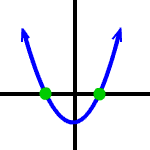Divide this polynomial.
 Suppose there exists a polynomial
p(x)
, which when divided by (
x
-1) gives a remainder -1 , when divided by (
x
-2) gives a remainder 3 and when divided by (
x
+3) gives a remainder 4. Let
r(x)
be the remainder when that polynomial is divided by (
x
-1) (
x
-2) (
x
+3) . Find the value of
r(20)
+2.9 .
Suppose there exists a polynomial
p(x)
, which when divided by (
x
-1) gives a remainder -1 , when divided by (
x
-2) gives a remainder 3 and when divided by (
x
+3) gives a remainder 4. Let
r(x)
be the remainder when that polynomial is divided by (
x
-1) (
x
-2) (
x
+3) . Find the value of
r(20)
+2.9 .
The answer is 437.
This section requires Javascript.
You are seeing this because something didn't load right. We suggest you, (a) try
refreshing the page, (b) enabling javascript if it is disabled on your browser and,
finally, (c)
loading the
non-javascript version of this page
. We're sorry about the hassle.
From the first few conditions, we know that p ( 1 ) = − 1 , p ( 2 ) = 3 , and (p(-3)=4).
The second part tells us that p ( x ) = ( x − 1 ) ( x − 2 ) ( x + 3 ) Q ( x ) + r ( x ) . We know that deg ( r ( x ) ) = 2 because deg ( ( x − 1 ) ( x − 2 ) ( x + 3 ) ) = 3 . Therefore, r ( x ) = a x 2 + b x + c .
Plugging in the values x = 1 , 2 , − 3 in p ( x ) = ( x − 1 ) ( x − 2 ) ( x + 3 ) Q ( x ) + a x 2 + b x + c gives p ( 1 ) = a + b + c = − 1 p ( 2 ) = 4 a + 2 b + c = 3 p ( − 3 ) = 9 a − 3 b + c = 4
Solving the system of equations, we arrive at the conclusion that a = 2 0 2 1 , b = 2 0 1 7 , and c = − 1 0 2 9
Therefore, r ( 2 0 ) + 2 . 9 = 2 0 2 1 ( 2 0 ) 2 + 2 0 1 7 ( 2 0 ) − 1 0 2 9 + 2 . 9 = 4 3 7 .